Table of Content
Why Next.js?
The world today is hyperconnected!
It means if you run a business, then app development isn’t an option but a necessity for you.
Having an app for your brand enhances customer engagement, improves brand loyalty, and, most importantly, facilitates convenient access to your products and services. That is why the demand for good and reliable apps is significantly increasing in the global business landscape.
Why Next.js? It is the most common question business owners ask when offered to develop their business app in Next.js.
The answer is that Next.js offers a unique blend of power, flexibility, and developer friendliness that makes it a highly prominent framework among developers. The apps developed by Next.js are fast, easy to use, and maintain, and they provide a terrific user experience. This makes Next.js a suitable framework for app development.
Let us explore it in more detail and unfold why Next.js can be a great pick for your business app.
An Overview of the Next.js Framework
Next.js is a powerful React framework powered by Java that has become a developer’s favorite for front-end development.
Next.js is built on React and provides features like automatic code splitting, typescript, server-side rendering, and more. These unique features and Next.js capabilities enable developers to code more swiftly and efficiently and build performance-driven apps.
In addition, Next.js shares an extensive Java community readily available to support you in different development challenges.
1. Serverless Functioning
One of the best standout features of Next.js that makes it unique is its versatility. Though it is a front-end framework, it offers a way to handle backend tasks using serverless functionality.
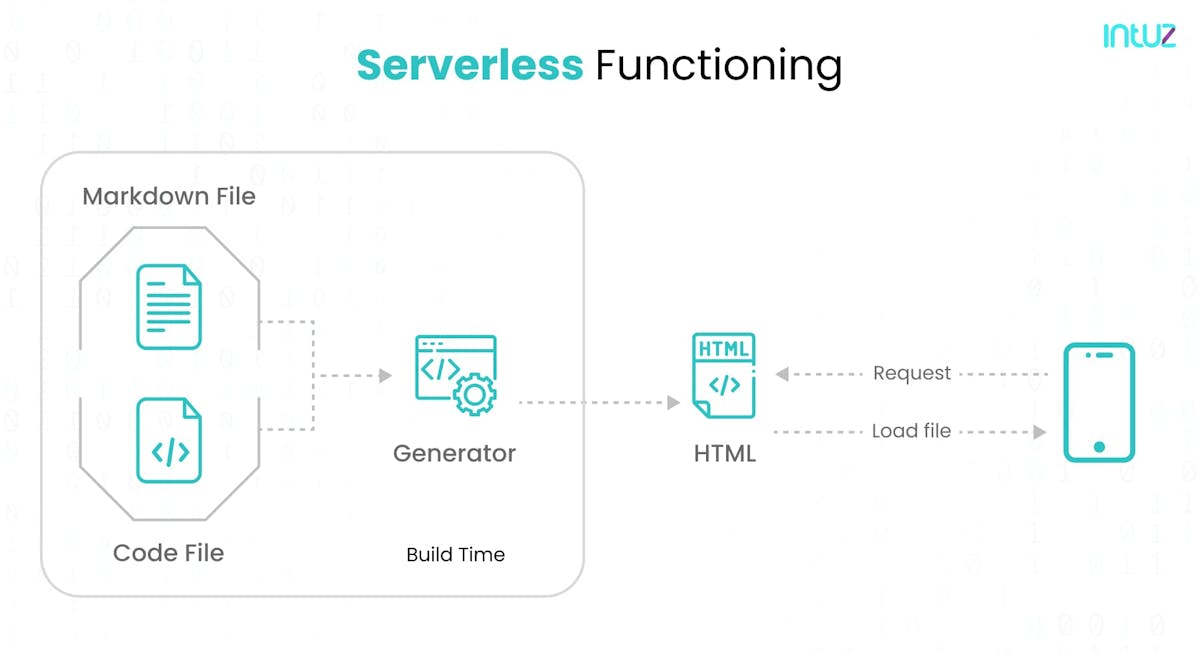
The serverless architecture simplifies server management by hosting your app on the cloud and ensuring proper resource utilization and performance.
Additionally, this feature automatically scales the app to handle uncertain traffic spikes. eCommerce businesses make the most use of this feature.
2. File-Based Routing
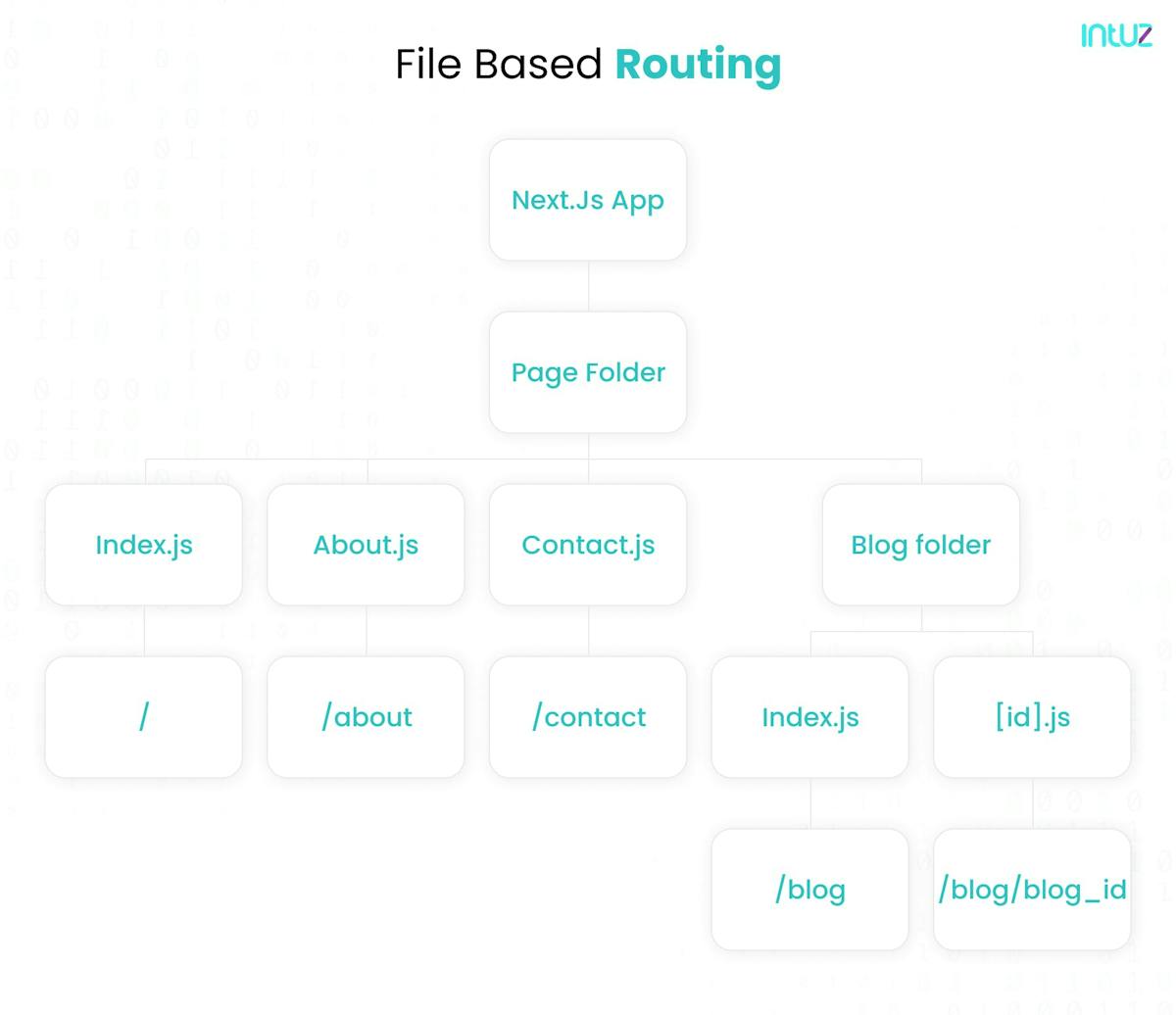
It is another essential feature of Next.js that enables developers to route files more easily and effectively. Next.js allows the mapping of URLs directly to the files in the project’s directory. This enables files to become routes and streamline navigation more swiftly.
3. Hot Module Replacement
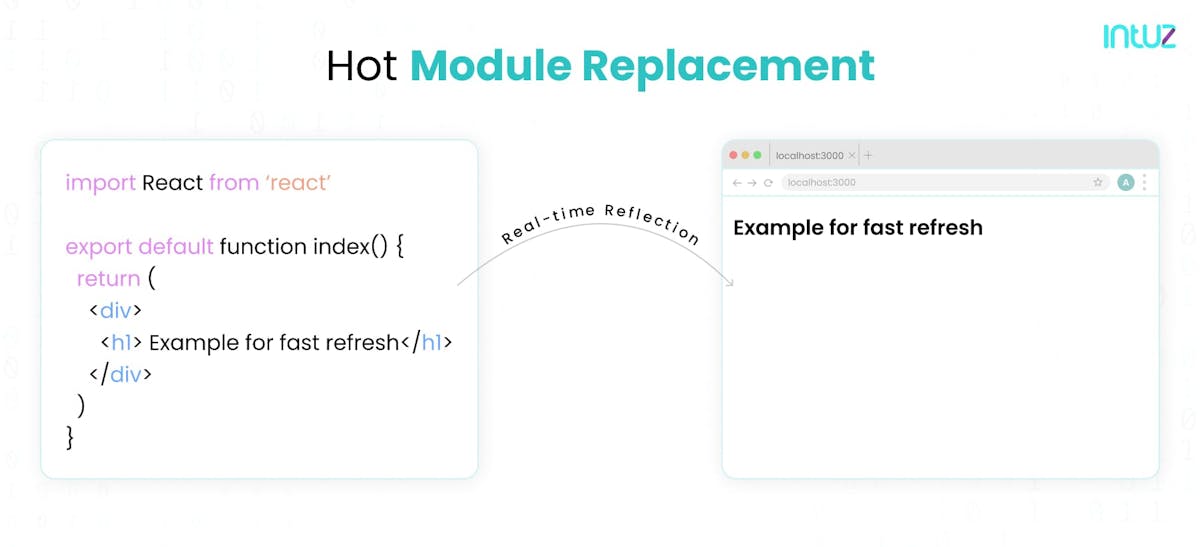
Any developer likes working on a platform that provides them with ease and control. With Next.js, this capability is delivered hot to the plate of developers. HMR allows you to change your code in real-time without requiring a full reload. It accelerates the development process and makes the process effective for the developers.
4. Seamless Error Handling
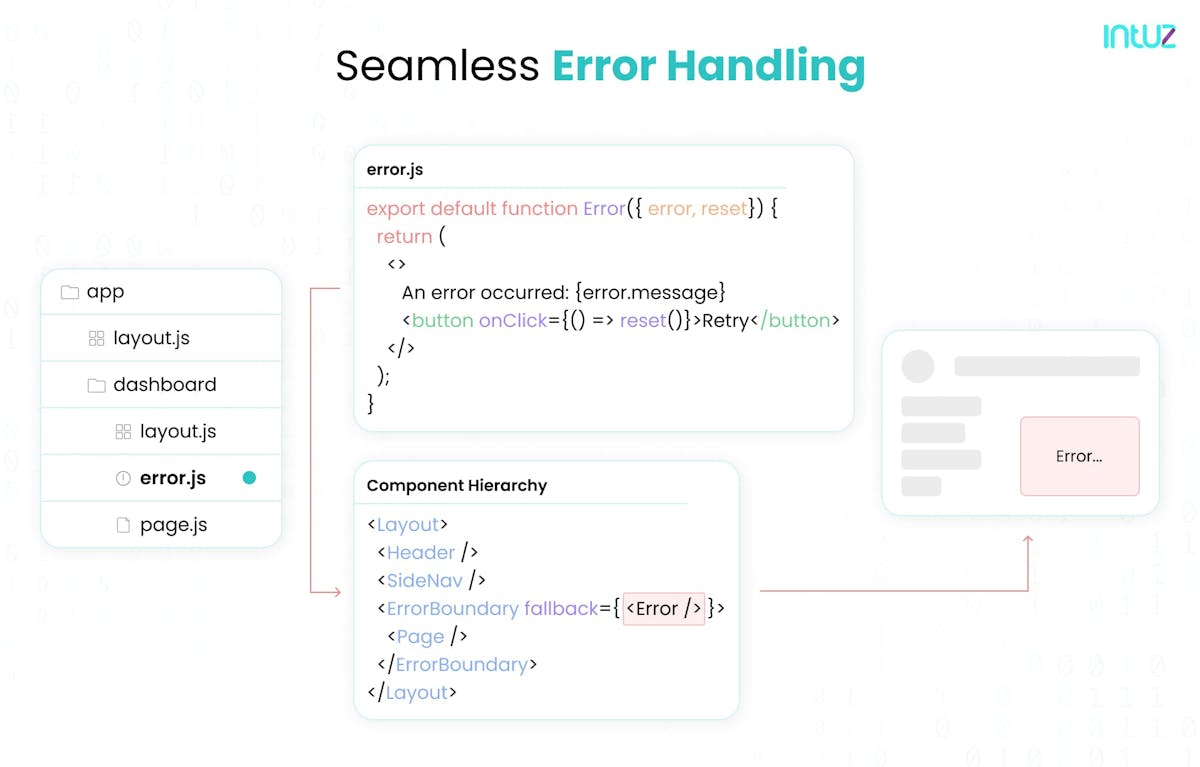
Next.js comes with built-in error handling that allows developers to create custom error pages. When a developer counters a similar error, Next.js displays the appropriate error page with a solution, saving time and effort for the developer.
These are just the tip of the iceberg. In our next section, we will cover the most significant features of Next.js that make it prevalent across the global developer community.
Let's Build Next.js Solutions Tailored for You
Learn MoreWhy Use Next.js for Scalable and Efficient Front End Development
Modern businesses require apps that are fast, secure, and scalable. To cater to this requirement, Next.js offers the perfect suite of tools for developers.
Let us glance at five practical reasons that make Next.js a great choice for developers:
1. Server-Side Rendering (SSR)
SSR, or server-side rendering, is a web development method. In it, the web pages are generated and rendered on the server side. As a result, a fully formatted HTML document is sent directly to the client's browser, making the process fast and easy.
The process of SSR:
- The user requests a new web page.
- The server acknowledges and further processes the user request.
- If needed, it may fetch data and render the HTML content.
- This pre-rendered data is then sent to the user's browser, which displays it on the live page immediately.
The Benefit
Fast-loading pages as opposed to traditional slow-loading
Traditional client-side rendering (CSR) renders the entire page data before displaying the contents to the user. This results in page delays and a staggered display of content, affecting the user experience.
Let's suppose you are an eCommerce brand. Now, you do not want your app to be slow and hamper the user experience. Using Next.js, you can develop an app that sends pre-rendered HTML to the browser and instantly displays your brand's products with images and videos.
2. SEO Benefits:
The extended benefit of using Next.js for your projects is its SEO leverage. We all know SEO is important for branding, but how do you crack that? Using Next.js!
Google crawlers consistently search for quick, secure, and informative pages. As pages developed with Next.js are capped with these characteristics, search engines can better index them. It greatly improves the visibility and discoverability of the brand.
Success Stories:
Many companies have reported significant improvements in SEO rankings and their website traffic after adopting Next.js. For instance, Netflix experienced improved organic search traffic and increased user acquisition after implementing Next.js. Airbnb, too, saw a significant increase in its marketing numbers and website traffic after incorporating Next.js.
These case studies and success stories demonstrate that Next.js's SEO-friendly features certainly do make you rank higher in search engines.
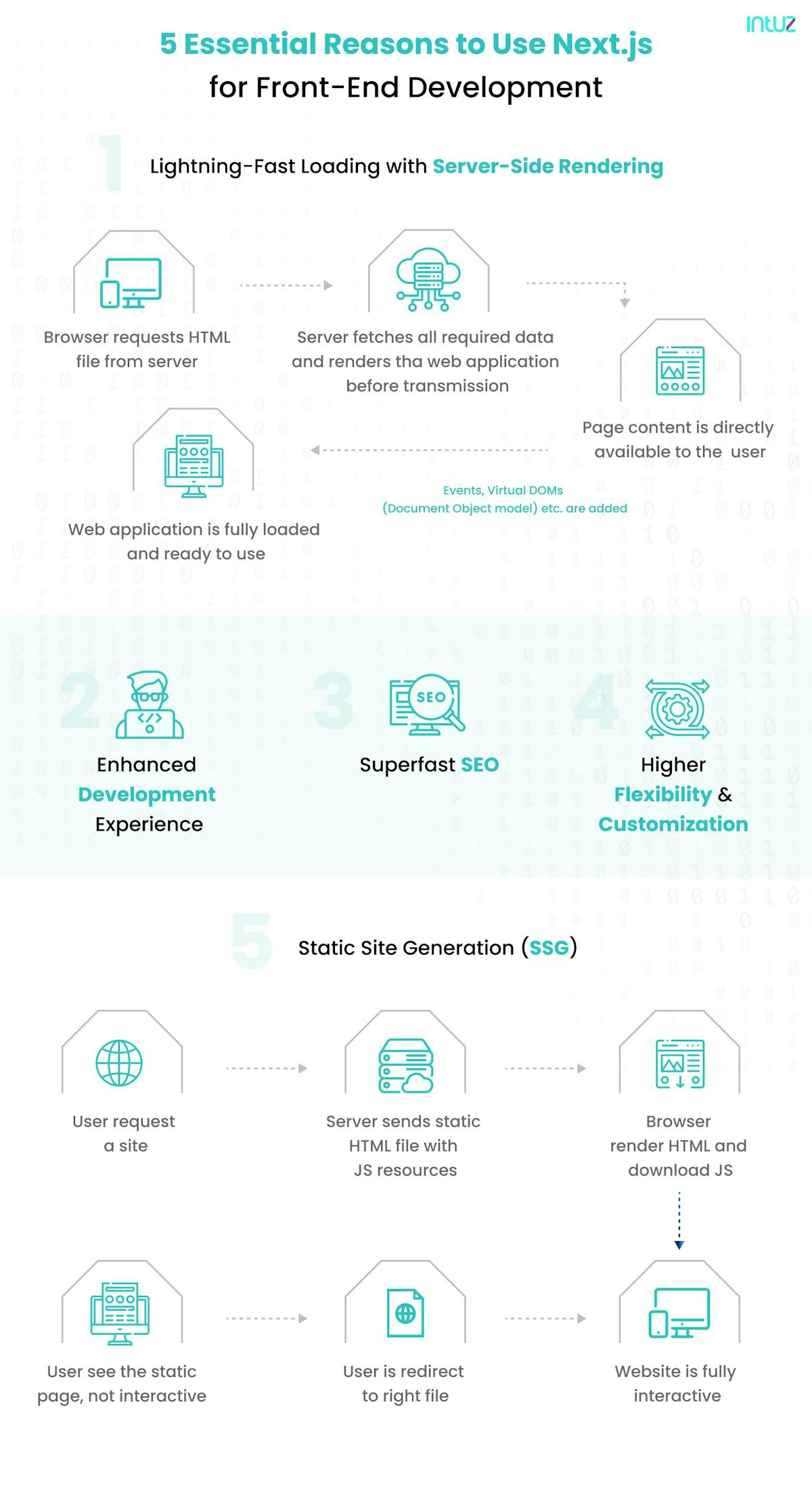
3. Built-in Static Site Generation
Next.js employs static site generation (SSG) to pre-render web pages at the build time.
SSG is a web development technique in which the web pages are pre-rendered at the build time instead of rendered dynamically on the server or client side. The content is rendered and saved to a content delivery network (CDN).
Using this technique, static HTML files can be generated within the build process. This reduces the need for server processing when a page is requested. This approach offers advantages such as:
Reduced Server Load
As the pages are pre-rendered during the build process, less server-side processing is required upon user request. This saves server load and hosting costs and results in a cost-effective process.
Improved Processing Speed
SSG enables lightning-fast content delivery upon request since the content is already pre-rendered. This leads to reduced bounce rates and an increase in user satisfaction.
Businesses that can benefit from the SSG feature of Next.js
- SSG is ideal for websites that process large amounts of data. It can include news websites or eCommerce platforms.
- Next.js web apps are perfect for pages that contain dynamic data with a low update frequency, such as blogs, product descriptions, etc.
- It is particularly useful for microsites in marketing campaigns that must load quickly and handle high traffic spikes.
4. Enhanced Developer Experience
Developer experience is critical to any web development framework, and Next.js scores perfect marks in that regard. Its developer-friendly features deliver a seamless working experience to the developers.
Some of its most user-friendly features include:
Automatic Code Splitting
Next.js automatically splits JavaScript bundles into smaller and more workable units. This improves page load times as only the necessary code is sent to the client. Invariably, as no manual configuration is needed, this saves the developer a lot of effort and time.
Hot Reloading
As discussed above, hot module replacement lets developers see code changes in real time without requiring a full page refresh. This dramatically speeds up the development process, as developers can instantly view the effects of code modifications.
Ease of Deployment
Whether you choose serverless deployments or traditional server hosting, Next.js projects are easy to deploy. The flexibility in deploying the files empowers developers to choose the setup that best fits their project's needs.
Next.js vs. Gatsby.js: A Comparison Between Server-Side Rendering Frameworks
Learn More5. Higher Flexibility and Customization
The Next.js framework excels at providing flexibility and customization to developers. It offers many ways and methods to tailor their approach to the needed project requirements:
Custom Routing
Using Next.js, you can define your custom routes, nested routes, and dynamic route parameters. For example, an eCommerce app can build custom routing for individual product pages and different product categories.
API Routes
We mentioned in the blog before how API routes enable developers to create serverless functions for handling backend logic. This flexibility is particularly useful for handling dynamic data or integrating with external services.
Integration with External Libraries
Next.js seamlessly integrates with various libraries and technologies, like GraphQL for fetching data and Redux for state management. This enables developers to choose an ideal suite of tools for the project’s needs.
Customization of Server Behavior
One of the standout features of Next.js is that it allows customization of server behavior. This empowers developers to implement server middleware and authenticate and authorize as per project requirements. It is a great feature for enhancing the security of applications.
It is this adaptability that allows developers to create unique and efficient solutions for a wide range of projects using Next.js.
Conclusion
Next.js is surely one of the most suitable choices for developing modern-world apps. Its numerous efficient and practical features make the job easier for developers and ensure optimal results for your business application. So, if you have a project in mind that can be framed in Next.js, we are just a step away.







